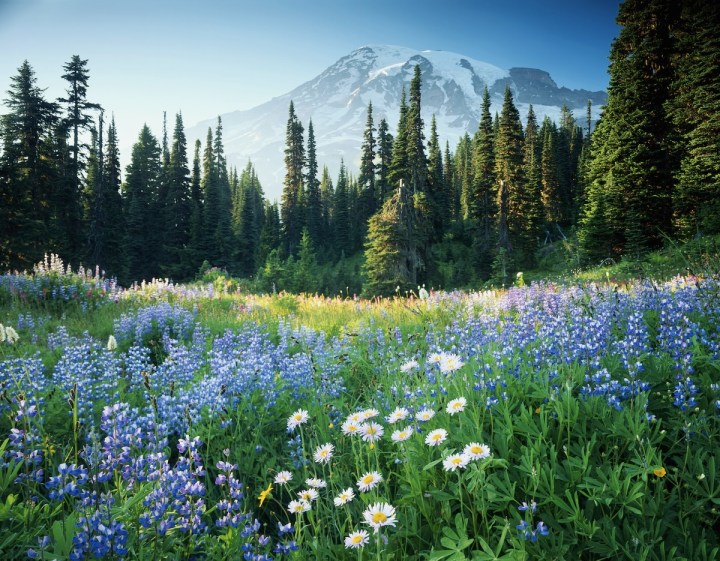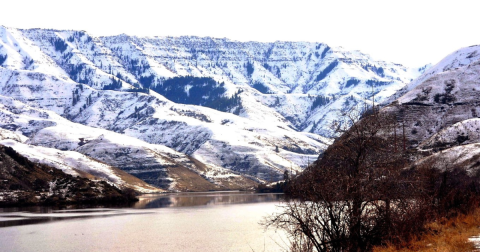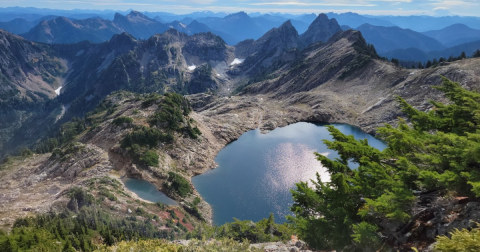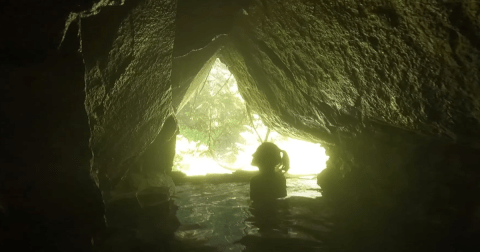15 Incredible Natural Wonders In Washington That Defy Explanation
There is no place quite like Washington. No matter where you are in the Evergreen State, you will find natural wonders that are breathtaking, inspiring, and even defy explanation. Here at Only In Your State, we love exploring the natural wonders in our great state and encourage every resident and out-of-state guest to add many of the best to their bucket list. Below are just 15 natural wonders in Washington State that will help you fall in love with this incredible place we call home.
Best Gorges and Canyons In Washington
When you think of the best nature in Washington, the state’s gorges and canyons often don’t come to mind — but they should. These canyons are expansive, jaw-dropping, and beautiful. In fact, they may just be some of the best nature spots in Washington.
1. Columbia River Gorge

No list of the best natural wonders in Washington would be complete without the Columbia River Gorge. This canyon stretches more than 80 miles through the Cascade Range. It also helps form the Washington and Oregon state line. We recommend you drive through the canyon in its entirety — the canyon is 4,000 feet deep in areas and the river offers scenery that you won’t find anywhere else.
2. Palouse River Canyon

The Palouse River Canyon not only offers incredible cliffs and canyon walls, but it is also home to one of the most stunning waterfalls in the entire state — Palouse Falls. The best way to capture views of this canyon and the waterfall is at Palouse Falls State Park in LaCrosse. Hike, picnic, or just enjoy the views here — it may become your favorite Washington state park.
Best Caves In Washington
Caves are a destination full of intrigue and mystery, and here in Washington, there are plenty just waiting to be explored. Bring a camera, properly prepare with the right outdoor equipment, and get ready for the adventure of a lifetime at some of the best caves in the Evergreen State.
3. Ape Cave

There is nothing quite like exploring Ape Cave near Cougar, Washington. This is the third longest lava tube in all of North America and you can explore it all on a short, paved trail. Make sure to bundle up as the cave is quite chilly and you’ll want a bright flashlight to light your way (cell phone flashlights are not bright enough for this journey). Also, keep in mind that Ape Cave is only open during the summer and reservations are required.
4. Guler Ice Caves

Guler Ice Cave should be near the top of your list of the best natural attractions in Washington. This is a 650-foot-long cave featuring ice stalactites and ice stalagmites. It is part of a network of caves in the Indian Heaven Volcanic Field. Bring a lunch and enjoy the forested picnic areas. Just don't forget a jacket as you can expect cooler temperatures inside the cave. This is also a seasonal cave but winter access is available with a Washington Sno-Park permit.
Best Waterfalls In Washington
The waterfalls found in the Pacific Northwest will immediately take your breath away. And with so many in our great state, it is hard to narrow down the absolute best. The following may be well-known waterfalls in Washington but they deserve to be visited over and over again.
5. Snoqualmie Falls

If you love to chase waterfalls, Snoqualmie Falls must be at the top of your bucket list. Located just east of Seattle, this is one of the most popular natural wonders in Washington State. This is an impressive 270-foot waterfall that was actually formed thousands of years ago by glaciers. Hikers can tackle short trails that take you close to the falls or you can simply enjoy the view from one of the observation decks.
6. Dry Falls

Dry Falls is a little unique — it was once the largest waterfall on earth. It was formed after ice dams collapsed during the Ice Age, causing water to flow over a 400-foot cliff. Today, you won’t see these massive falls because the ice eventually melted away, leaving the falls dry. But, that doesn’t mean this natural wonder in Washington isn’t worth visiting. You can explore all around this fascinating area at Sun Lakes-Dry Falls State Park in central Washington. The area near the visitor center offers some of the most breathtaking views.
7. Spokane Falls

Located in eastern Washington is Spokane Falls. These beautiful falls are set right in the heart of the city and don’t require any hiking to admire. In fact, there are multiple ways to view these waterfalls in Spokane including trails in Riverfront Park and the Monroe Street Bridge. For a truly epic view, take a ride on the Numerica SkyRide. This is a gondola ride over the Spokane River and near Spokane Falls.
Best Overlooks and Scenic Vistas In Washington
Washington is stunning. From any corner of the state, including the Olympic Peninsula and the San Juan Islands, the scenery is inspiring. And while there are dozens of overlooks and scenic vistas where you can capture the most incredible views, the following two destinations will certainly will take your breath away.
8. Mount Baker Scenic Byway

We may be cheating a little bit, but every mile of the Mount Baker Scenic Byway is filled with remarkable scenic vistas and incredible overlooks. This 57-mile scenic drive travels from Bellingham to Artist Point and ends at the base of Mount Baker. It’s also the only way you can reach the Mount Baker Ski Area. Along the way, you’ll pass forests, waterfalls, and small communities. This byway actually contains some of the most photographed landscapes in the Pacific Northwest.
9. Hurricane Ridge, Olympic National Park

If you want to capture the most incredible views of Olympic National Park, Hurricane Ridge is where you need to go. This is the most easily accessed mountain area in the national park. Here, you can find hiking trails, wildflowers, animals, and landscapes you never want to forget — there’s seriously nothing quite like it.
Best Rock Formations In Washington
The best rock formations in Washington have a story to tell. They are mesmerizing, unique, and quite impressive. Whether you hike to them or you simply admire them from a distance, learn about their story — these structures truly do defy explanation.
10. Drumheller Channels

The Drumheller Channels National Natural Landmark is one natural wonder in Washington that not many individuals have visited or even know exists. This unique wonder was created by flooding during the ice age thousands of years ago. This natural wonder is managed by the Columbia National Wildlife Refuge with multiple roads that provide access.
11. Twin Sisters Rock

Twin Sisters Rock are two basalt pillars that are a must-visit for all individuals. However, to truly enjoy the views of these formations, you will need to lace up your hiking shoes as there is a one-mile, round-trip hike to conquer. But, on this hike, you’ll not only enjoy views of the rock formation but also of the Columbia River. Keep in mind that while you can hike to the rock formations, you cannot climb on top of them.
Unique Natural Wonders In Washington
The list of the best natural wonders in Washington is quite extensive — and extremely impressive. While there are many unique natural attractions that you could put on your bucket list, the following four destinations are those you are likely familiar with but should never take for granted.
12. Hoh Rain Forest

Located in Olympic National Park is one of our favorite natural wonders — the Ho Rain Forest. This is one of the few temperate rainforests on earth and inside every inch is filled with natural beauty. There are several remarkable features found within this forest but I recommend you check out the Hall of Mosses, which is a short, loop trail with hanging moss, old-growth trees, and even some wildlife.
13. Mount Rainer

Mount Rainier may be Washington’s most iconic national wonder and it’s an outdoor attraction that is a must-see. This impressive mountain stands over 14,000 feet tall and is full of beauty (particularly in the summer when wildflowers are in bloom). While you can always enjoy the view of Mount Rainier from a distance, spend some time at Mount Rainier National Park, which is just a short drive from both Seattle and Portland.
14. Mount St. Helens

Mount St. Helens is one of the few volcanoes still active in Washington State. This one natural wonder holds a lot of history, including the famous 1980 eruption, which took the lives of dozens of individuals. Stop by the Mount St. Helens Visitor Center in Castle Rock to learn even more about this natural spot in Washington as you look at fascinating displays, watch a movie, or even take a short hike.
15. Beaches in La Push

La Push is a small community tucked away on the Olympic Peninsula and surrounded by Olympic National Park. This community is known for its incredible beaches where you’ll see fascinating sea stacks, dramatic cliffs, waterfalls, and more. Make sure you spend some time at First Beach in La Push. This beach is known for its incredibly large waves and great views. It may just be paradise.
What other natural wonders of Washington State would you add to our list? What nature places in Washington are on your bucket list? Let us know in the comments. While many natural wonders were not included on this list, it doesn’t mean they aren’t worthy of a visit. Check out our collection of articles for even more inspiration for your Washington bucket list.
OnlyInYourState may earn compensation through affiliate links in this article. As an Amazon Associate, we earn from qualifying purchases.




